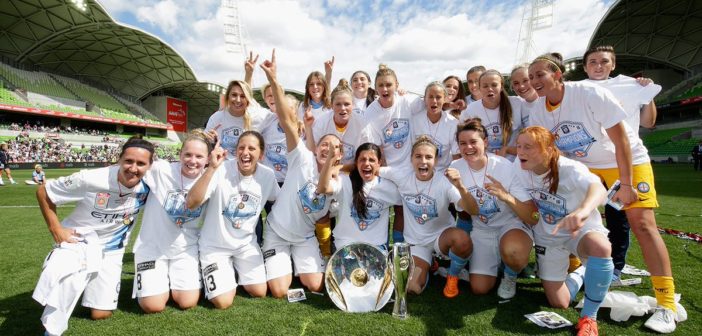As the old adverts used to say, “Australians wouldn’t give a Castlemain XXXX for anything else.“
Which might be why Football Federation Australia seemed entirely unmoved by the Coronavirus last week, greenlighting A-League and W-League matches over the weekend just gone.
So, as the world has gone into staggered levels of lockdown with Ireland closing pubs and Germany closing brothels, the question is, why the Fosters is football in Australia continuing?
Questionable decisions
Since the two W-League semi-finals played over Saturday and Sunday, FFA have since issued a new statement declaring that the W-League grand final this coming weekend [and the rest of the A-League season]will go ahead, albeit behind closed doors.
With 56 matches down and just one remaining of the protracted women’s season, it seems as if FFA has taken the Magnus Magnusson line of, “I’ve started so I’ll finish.” Yet, with the last five rounds of the A-League still set to go ahead, you have to wonder how bad things need to get for the federation to fall into line with the majority of the world.
From a season that started later to account for a later end to the NWSL season, that was put under the spotlight when bushfires ravaged the country forcing postponements and worse, games to go ahead with dangerously poor air quality. To the elongated February FIFA window when Australia hosted the penultimate round of AFC Olympic qualifiers after they’d been hastily moved from China.
To Western Sydney Wanderers getting soundly beaten in their semi-final – something that was always a possibility against a ruthless Melbourne City team, but that wasn’t helped by their downturn of form following on from the mid-season exits of key players Lynn Williams and Denise O’Sullivan. A season that was supposed to mark a new era following on from the 2019 World Cup has rather been a sobering reminder of its own limitations.

As the Australian league fights for its own place in the world, either going alone or forming a transpacific partnership with the American NWSL, in hopes of culling the stem of players to European winter leagues. We have to ask ourselves what the W-League’s place in the world is, or could be.
Drawbacks
The current USP for “the Dub” is its short nature, giving NWSL players a place to spend their off-season as it offers American-based Australians a chance to spend a handful of months at home. The current calendar equally syncs up nicely with the Nordic calendars which, as we’ve seen in the most recent transfer window, means Australians who want to continue to play in the W-League but not the NWSL can head to Scandinavia. But that back-to-back-to-back-to-back endless, breakless play creates its own problems with fatigued players more susceptible to injury and burn out.
One of the shortest seasons in world football with each of the nine teams playing just 12 regular season matches, it’s hard to see just how FFA flesh the league out into its own entity without severing the NWSL ties. Or running players further into the ground. Yet the federation have maintained their assertions that they want the W-League to become one of the top five leagues in world football.
There is no question Australia produce talented footballers and that the W-League is vital for their first steps into senior football but as the curtain begins to descend on this season, albeit behind closed doors, it might be worth asking if what FFA want is even possible. Or if the W-League, like so many others around the world, will be forced to stay as a feeder league, giving players their start but never ending up as the destination.
![Prost International [PINT]](https://prostinternational.com/wp-content/uploads/2021/08/PINTtFontLogoRoboto1536x78.jpg)



